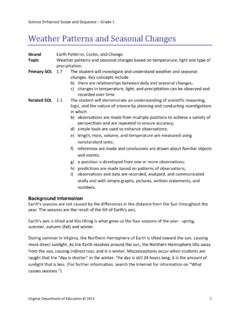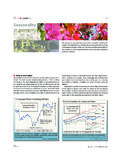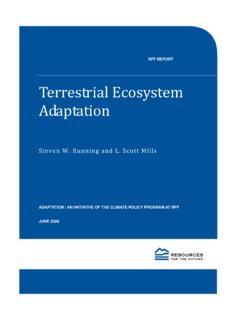Transcription of What Changes when the Seasons Change?
1 Science Enhanced Scope and Sequence Grade 2 virginia department of education 2012 1 what changes when the seasons change ? Strand Earth patterns , Cycles, and change Topic Effects of seasonal Changes on living things Primary SOL The student will investigate and understand that weather and seasonal Changes affect plants, animals, and their surroundings. Key concepts include a) effects of weather and seasonal Changes on the growth and behavior of living things. Related SOL The student will demonstrate an understanding of scientific reasoning, logic, and the nature of science by planning and conducting investigations in which a) observations and predictions are made and questions are formed; b) observations are differentiated from personal interpretation; g) conditions that influence a change are identified and inferences are made; h) data are collected and recorded, and bar graphs are constructed using numbered axes; l) simple physical models are designed and constructed to clarify explanations and show relationships.
2 Background Information Animals have many adaptations which allow them to survive in their habitats. Camouflage, a blending into the environment either by coloring or by shape, helps animals to hide from their predators or to sneak up on their prey. Frogs, turtles, walking sticks, praying mantises, and grasshoppers are all examples of animals that blend into their environment. Sometimes animal adaptations are triggered by weather and seasonal Changes . During the spring, the warm weather and plentiful food supplies encourages the growth of both plants and animals. This growth continues throughout the summer. During the fall, the weather cools, the amount of sunlight decreases, and food becomes scarce. Some plants become dormant and some animals undergo Changes to prepare for the winter. Some animals collect food to store during the winter months and others hibernate, migrate, or grow thicker fur.
3 Materials For introduction: chart paper, markers, books about animals in winter, and books about plants For Part I: blank booklets (construction paper folded in half as the cover and three sheets of plain paper folded in half as pages) For Part II: large grassy area, chenille pipe cleaners cut into two inch lengths, five for each student, student journal For Part III: (for each group of four) plastic tub, eight 2 pieces of yarn, four clothespins, supply of foam peanuts (enough to cover the bottom of the tub Science Enhanced Scope and Sequence Grade 2 virginia department of education 2012 2 Vocabulary adapt, adaptation, camouflage, hibernate, hibernation, migrate, migration, dormant, dormancy Student/Teacher Actions ( what students and teachers should be doing to facilitate learning) This lesson is divided into an introductory activity and three parts, each of which will take about 30 minutes to complete.)
4 Introduction 1. Display a wall chart with five columns and 10-15 rows. Ask the students to name the four Seasons and list them at the tops of columns two through five (see below for an example). 2. Write bear in the first column on the second row. Ask the students what a bear does in each of the Seasons and why. (Note: In some climates such as southern virginia , bears do not undergo a true hibernation. They may wake up and move around but do not feed during the winter.) Record their responses in the appropriate columns. 3. Encourage students to name other living things (animals and plants) to fill in more rows on the chart (make sure students include humans). 4. Introduce the terms: adaptation, hibernation, migration, and dormancy. 5. If students are unsure of what some of the animals do during different Seasons , leave those columns blank. 6. If desired, read books about plants and animals to assist with filling in the blanks.
5 Sample Chart Spring Summer Fall Winter bear wake up eat eat a great deal hibernate, babies are born goose babies eat migrate stay in warm spot apple tree buds come out, flower, bees pollinate apples grow ripe fruit/lose leaves dormant Procedures Activity 1 1. Revisit the chart created in the introduction. Review the terms used in the chart-hibernate, migrate, growing fur, and dormant. Remind students of the meanings of these words and that they are all types of animal adaptations. 2. Tell students that another form of animal adaptation is camouflage. Discuss what this means and ask students for examples of animals that can camouflage themselves. 3. Distribute a blank booklet to each student. Direct students to title their booklet, Adaptations. Guide them to create the cover and a title page. 4. Direct students to write hibernation on the back of the title page and then write a definition.
6 On the opposite page, have them draw an animal that hibernates. Remind students to show the animal s habitat around it. 5. Repeat with migration, dormancy, and camouflage. Science Enhanced Scope and Sequence Grade 2 virginia department of education 2012 3 Procedures Activity 2 Students will conduct a search for pretend caterpillars which have been placed so that their color and sometimes their shape camouflage them. 1. Prior to this lesson, determine two areas in the schoolyard that will be used for the outside activity. If an area is not available or if weather does not permit an outside activity, do the activity indoors. 2. The outdoor activity will be a Caterpillar Search. Each student will have the opportunity to randomly select five chenille caterpillars from the bag or box where the cut-up pieces of chenille stems have been placed. 3. For the activity, the class will then be divided into two groups.
7 Each group will go to their designated area on the playground to hide (camouflage) their five caterpillars. Once all the caterpillars are camouflaged, the two groups will switch areas and will search for the hidden caterpillars. Each person can find up to five caterpillars. 4. Prepare the container of the chenille stems before you start this session with your students. 5. Review several of the different adaptations that caterpillars have to help them survive. 6. Have each student select five chenille caterpillars from the container. Students can bend their caterpillars into U or S shapes. 7. In their student science journals, writing in a complete sentence, have students record the colors of caterpillars that they selected. 8. Tell your students that they are going to count off so each student has a number (first student is #1, second is #2, third is #3, etc., until all students have a number).
8 Remind students that they need to remember their numbers. 9. Have all the students whose number is an even number stand on the left side of the class. Have all students with an odd number stand on the right side of the class. 10. Explain the purpose and rules for the activity, Yum, Yum Caterpillars. Purpose: Caterpillars are going to be hidden in two designated habitat areas and the students will have the opportunity to be birds that are looking for caterpillars to eat. Rules for Yum Yum Caterpillar participants: a. Hide your five caterpillars in your designated habitat. Use color, shape, etc., (adaptations) to hide the caterpillars. Do NOT put caterpillars under something to hide it. You have five minutes to hide your caterpillars. b. when your caterpillars are hidden, return to the common area. c. You will be a bird and will search for caterpillars in the opposite area from where you hid your caterpillars.
9 D. You can ONLY pick up one caterpillar at a time. e. You may ONLY use your thumb and forefinger to pick up the caterpillars (fingers simulate a bird s beak). f. You may only find five caterpillars. Once you have reached five caterpillars or when the teacher says time for hunting is over, return to the common area. 11. Allow about two minutes for the students to retrieve five caterpillars. Science Enhanced Scope and Sequence Grade 2 virginia department of education 2012 4 12. After the caterpillar search is complete, have students return to the area where they originally hid their caterpillars. Have each student check the five locations where they hid their caterpillars. If any of their caterpillars were not found, have them retrieve the caterpillar. Discuss as a group why some of the caterpillars were not found. Put any caterpillars that were not found during the search, but have now been retrieved by the original student, in the original bag/box.
10 These caterpillars will not be a part of the remaining activities in this session. 13. Create a graph on the ground or other large space of the collected caterpillars using the actual chenille stems that were found. 14. Use the graph to discuss which caterpillars were most readily collected and why. Continue the discussion about camouflage and brainstorm about other animals that also use camouflage. 15. Tally the caterpillar data as a class. 16. Have the students pick up all the caterpillars that they had found from the graph. 17. Have students create their own bar graphs using the given data. 18. Have the students write two true statements and two false statements about their graph. 19. Circulate among the students as they create the graphs, checking for individual understanding, giving assistance as necessary. 20. In their journal on the Yum, Yum Caterpillars page, have students draw a picture of the location they think was the best for hiding one of the caterpillars that they found and write a sentence about why the caterpillar was so well hidden.

















